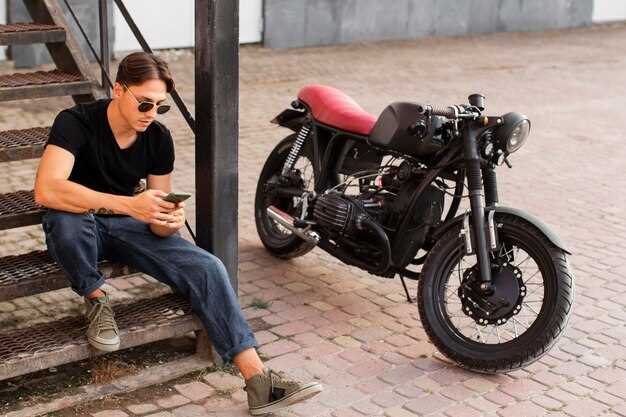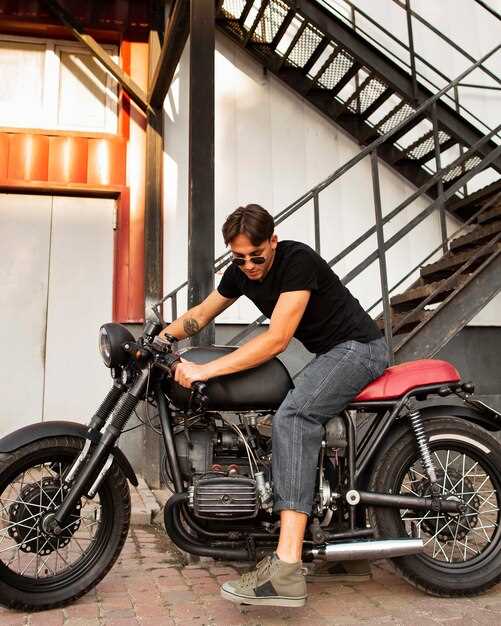
Creating a street-legal superbike from scratch is a challenging yet rewarding endeavor that combines engineering prowess, mechanical skills, and a passion for speed. Enthusiasts often dream of designing their own high-performance motorcycle, blending innovation with personal touch. This article will guide you through the intricate process of building a superbike that not only meets performance standards but also adheres to legal requirements.
Before diving into the build process, it’s essential to understand the foundation on which your bike will be constructed. Choosing the right components, from the frame to the engine, is critical. The heart of the superbike typically lies in its engine, and selecting one that balances power with weight can make all the difference. Additionally, customizations to the chassis and suspension are necessary to optimize handling and stability at high speeds.
Equally important is ensuring that your superbike complies with street-legal regulations. This includes incorporating necessary electronics, lighting, and safety features that align with local laws. Attention to detail in this phase can mean the difference between a project that is admired on the road and one that faces legal challenges. Understanding local regulations is paramount, as they can dictate everything from noise levels to emissions standards.
In this comprehensive guide, we will explore each step in the construction of a street-legal superbike, highlighting essential techniques, tools, and tips to ensure your build is not only powerful and stunning but also compliant with the law. Get ready to transform your vision into reality and bring your superbike dreams to the asphalt.
Choosing the Right Frame and Suspension Components

The frame is the backbone of your superbike, significantly influencing its handling, weight distribution, and overall rigidity. When selecting a frame, prioritize materials such as aluminum or carbon fiber for a balance of strength and lightweight construction. A trellis frame offers flexibility and responsiveness, while a monocoque design provides enhanced stability and rigidity, making it crucial to choose according to your desired riding characteristics.
Another vital aspect is the geometry of the frame. A steeper head angle improves responsiveness, whereas a relaxed angle enhances stability at high speeds. Consider the intended purpose of your superbike; aggressive riding may require a more race-oriented geometry, while comfort for longer rides could call for a slightly more relaxed setup.
Suspension components are equally critical. Proper suspension enhances ride quality and keeps the tires in contact with the road for optimal performance. Start with a high-quality front fork. Adjustable forks (including preload, compression, and rebound settings) allow for fine-tuning according to weight and riding style. Look for forks that suit the bike’s intended use, whether it’s aggressive track riding or everyday commuting.
The rear suspension should complement the front setup. A mono-shock system with adjustable settings can cater to varied riding conditions, ensuring that you maintain control over your bike’s performance. Pay attention to the linkage system; progressive linkages can provide a smoother ride by adjusting the rate of compression according to load.
It’s essential to match the suspension travel with your frame geometry for optimal performance. Ensure that both components work in harmony to accommodate your riding style, whether you prioritize cornering speed or straight-line stability. Lastly, don’t overlook the importance of quality dampers and bushings for longevity and consistent performance throughout your bike’s life.
Powertrain Selection: Engine and Transmission Options

Selecting the right powertrain for your street-legal superbike is crucial for maximizing performance, reliability, and overall riding experience. The two core components of the powertrain are the engine and transmission, each playing a vital role in the bike’s capabilities and efficiency.
Engine Options: The choice of engine will significantly influence the bike’s performance attributes such as power output, torque characteristics, and weight distribution. Common options include:
- Inline Four-Cylinder Engines: Known for high RPM capabilities and smooth power delivery, these engines provide an excellent balance of power and weight. They are a popular choice for superbikes due to their performance range and tuning potential.
- V-Twin Engines: Offering a broad torque curve and a distinct character, V-Twin engines are favored in applications that require strong low-end power. While they may be heavier, their unique sound and aggressive performance are appealing to many riders.
- Parallel Twin Engines: Typically lightweight with efficient fuel consumption, these engines can still yield impressive power. They are often utilized in entry-level superbikes for a balance of performance and manageable handling.
- Electric Motors: With the rise of electric mobility, high-performance electric motors are becoming viable for superbikes. They offer instant torque and eliminate the need for traditional transmission components, though they present challenges in weight distribution and charging infrastructure.
Transmission Options: The transmission system directly impacts how power is delivered to the wheels. Key options include:
- Manual Transmission: Preferred by purists for its direct connection to the riding experience, manual transmissions allow riders to have complete control over gear selection. They can enhance engagement but may require more skill to operate effectively.
- Automated Manual Transmission (AMT): This system combines the benefits of manual and automatic transmissions, allowing for quick shifts without a clutch lever. It is advantageous for both performance and ease of use.
- Continuously Variable Transmission (CVT): Although less common in high-performance settings, CVTs can provide seamless acceleration without traditional shifting, allowing for optimal engine performance under different conditions.
In conclusion, the selection of the right engine and transmission for your superbike depends on your performance goals and riding preferences. A careful evaluation of these options will ensure a well-balanced and exhilarating performance on the road.
Integrating Street-Legal Features: Lighting and Safety Standards
When building a street-legal superbike from scratch, adhering to lighting and safety standards is paramount. These regulations not only ensure compliance with the law but also enhance rider safety and visibility.
First and foremost, lighting systems must meet specific requirements. Headlights are essential for night riding, and they should provide adequate illumination while not blinding oncoming traffic. Most jurisdictions mandate a low and high beam function, with a minimum brightness requirement. The use of LED technology has become popular due to its energy efficiency and longevity.
In addition to headlights, turn signals are also a critical component of any street-legal motorcycle. These indicators must be visible from a distance and be operational from both the front and rear of the bike. Leveraging integrated lighting solutions that merge signals with brake and tail lights can enhance visibility without compromising aesthetics.
Reflectors play a vital role in safety, particularly in low light conditions. The placement of reflectors on the sides, front, and rear of the motorcycle must conform to specific standards, providing additional visibility from various angles. Utilizing high-visibility colors and retroreflective materials can further improve safety.
The braking system needs to comply with safety standards that often dictate the type of brakes used and the efficiency of braking performance. A dual braking system, with both front and rear brakes activated by separate levers, is generally required. Additionally, ensuring that the brakes are fitted with a signal that indicates when they are engaged is essential.
Frame and structural integrity must also not be overlooked. The build should comply with regulations regarding strength and durability to withstand the stresses of road use while offering crash protection for the rider. This includes the use of crash bars or frame sliders that can mitigate damage in the event of a fall.
Lastly, it is essential to consider the use of safety gear and additional features such as horn placement and visibility aids. A high-decibel horn can alert other road users, contributing to overall safety. Furthermore, using reflective stickers or gear can enhance a rider’s visibility during daytime and nighttime rides.
In conclusion, integrating street-legal features into a custom superbike requires careful consideration of lighting and safety standards. Compliance with these regulations not only allows for legal road use but also promotes a safer riding experience, ultimately enhancing the enjoyment of the superbike.

